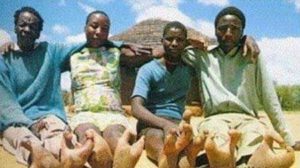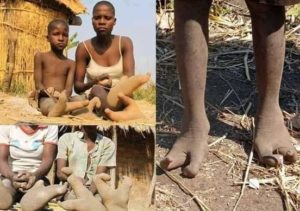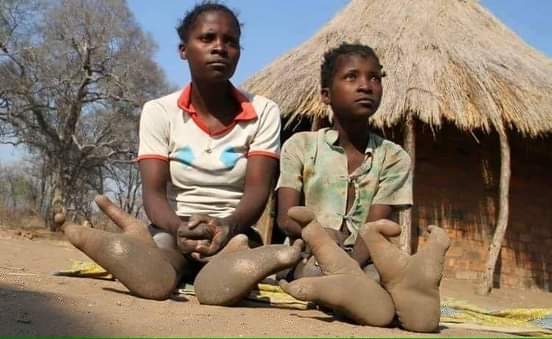WHAT YOU MIGHT NOT KNOW
With Amara Thoronk
Has it ever crossed your mind that there are people who naturally live with only two toes? Well meet the VODOMA people of Zimbabwe who mysteriously and naturally have only two toes but are however not disabled.

They live in the Kanyemba region in the north of Zimbabwe, especially in the Urungwe and Sipolilo districts around the basins of Mwazamutanda River. They are uniquely traditional hunter-gatherers indigenous to Zimbabwe.
The vadoma speak the Dema language, which is closely related to the dominant Shona language of Zimbabwe and largely comprehensible to those who speak the Korekore and Tande Shona dialects. Living alongside Shona and Kunda people in Kanyemba, they also speak Korekore Shona and Kunda.

According to vadoma tradition, their ancestors emerged from a baobab tree. Upon descending from it, they walked upright to hunt and gather the fruits of the land. The name vadoma is also used in the Zambezi region for a semi-mythical people characterized as magical, capricious, hard to find, and living among the trees. This may refer to Khoisan hunter-gatherers who preceded the migration of the Bantu Shona into the Zambezi Valley, and the vadoma are possibly related to this earlier population. There is this rumored belief that the vadoma are capable of disappearing in the forest and performing magic.
Historically, the vadoma mainly live in the mountains, living a largely nomadic lifestyle of hunting, fishing, trapping, honey hunting, and gathering wild fruits and roots. Before the European colonization of Africa, the vadoma also resisted incorporation into the Korekore Shona kingdom of Mutapa, which resulted in little access to fertile land. Land reform after Zimbabwe’s independence did not change this, despite pressure from the Mugabe government, and the vadoma’s continuing dispossession has made them Zimbabwe’s only non-agricultural society, leading to stereotypes as “Stone Age cave-dwellers”.
The mountain homeland of the vadoma has now become the Chewore Safari Area. In recent years, vadoma have been threatened by game rangers due to a crackdown on poaching. Many abandoned their hunter-gatherer lifestyle and moved to the lowlands. Today, though they have little contact with the majority populace, many vadoma families live settled lives as semi-foragers, building houses on wooden platforms to avoid predators. During rainfall, they cover the shelters with thatching. vadoma are also reluctant to wear textile fabrics. Recently, the Seventh-Day Adventist Church built Mariga Primary School to educate vadoma children.
According to science, such condition is caused by ectrodactyly in which the middle three toes are absent and the two outer ones are turned in, resulting in the tribe being known as the “two-toed” or “ostrich-footed” tribe. This is an autosomal dominant condition resulting from a single mutation on chromosome number. It is reported that those with the condition are not handicapped and are well integrated into the tribe. While possibly an aid in tree climbing, the condition prevails because of a small genetic pool among the vadoma and is propagated by the tribal law that forbids members to marry outside the group.
Their isolation from other people has made them develop and maintain ectrodactyly, and their comparatively small gene pool has resulted in the condition being much more frequent than elsewhere.




